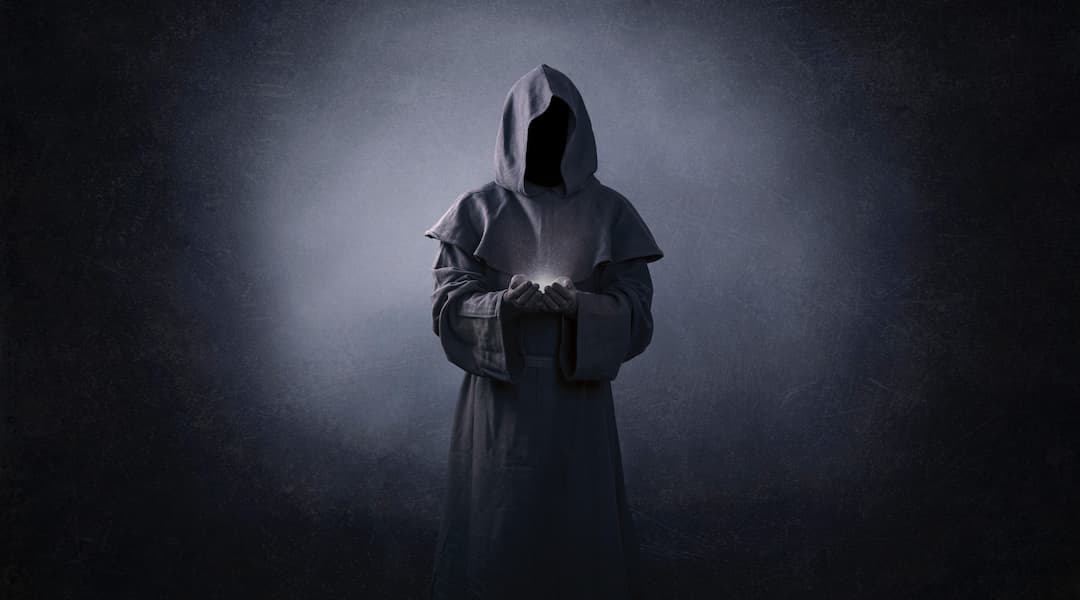
A (Black) Flash in the Pan: Provincetown’s Boogeyman

The 1930s were a difficult time. The Depression which had followed the stock market crash was still a factor. Across the Atlantic, Adolf Hitler was building an evil empire.
And in Provincetown, a strange creature was sighted abroad at night:
The Provincetown Advocate, October 26, 1939:
Fall Brings Out the Black Flash: Hard Winter Certain As Cabin Fever Stories Start.
It ain’t usually until “cabin fever” time that the balmy stories start. After folks have been penned up here for too long a time, in too little space, with just the same faces to look at every morning, afternoon and evening, then the crazy yarns begin circulating.
But winter seems to be shutting in early this year. Here it is only October and the “Black Flash” has been prowling, scaring kids so that they won’t go out nights and won’t go to bed, grabbing women, jumping over ten foot hedges with no trouble at all. “Chair springs on his feet” is the explanation.
The Provincetown Advocate, November 9, 1939:
Chief Denies Current Rumors
Chief of Police Anthony P. Tarvers this morning absolutely denied the rumors current that the so-called “Black Flash” had been captured. “As far as I am concerned, the Black Flash is dead and gone,” said the chief.
The kids saw it first. A group of children on their way home from school reported a creature jumping out at them from behind the dunes. It was tall, all black, and laughed at them as they ran away from it.
But kids are always seeing monsters, right?
Perhaps; but the next report came from an adult. Marie Costa was walking alone in front of Town Hall one evening when the creature leapt out from behind—or possibly over—a hedge. She got a good look at it, and described it as having glowing blue eyes and silver ears, in addition to the black cape the kids had seen. Screaming, Costa ran into a nearby coffee shop, which immediately emptied as people ran out to try and catch the monster. The police took Costa’s statement, but could do little else.
After that, the reports poured in from all over town. The creature was seen in the East End and then, minutes later, in the West End, arguing for wings on its feet. A number of names were tried on to describe it, some calling it the Devil of the Dunes, others the Provincetown Phantom; but it’s the name that stuck, the Black Flash, which took into account the creature’s impossible speed.
While not as friendly a ghost as Casper, it is notable that the Black Flash’s only objective seemed to be scaring people out of their wits. It didn’t haunt houses, or threaten people, or injure anyone. If mothers told their children to be good or else the Black Flash would come for them, the weight of that warning was the frisson of the unknown rather than of any specific danger the creature posed.
Everyone had a theory about the Black Flash. It was a schoolboy prank; it was the reincarnation of a similar fiend that had haunted London a century before; it was a prank put together just after Halloween by townspeople already bored with winter. The police chief claimed to know who was behind the hoax, but wouldn’t tell the names so as not to embarrass the perpetrators. And that’s entirely possible. The Black Flash disappeared before the end of the year perhaps as the result of a firm talking-to by Chief Tarvers, who assured the town that “the Black Flash is dead and buried.”
Provincetown was ripe for an apparition. The previous Halloween, 1938, had seen the controversy over Orson Welles’ 1938 radio play about Martians invading New Jersey. In January of 1939 the town had a scare closer to home, as a 35-foot-long “sea monster” (apparently a decomposing basking shark) was discovered on the shore near Wood End. Throughout that summer local pets seem to have gone a little crazy, with the Advocate reporting on “dog bites and stray cats” all over town. And then in September Joseph Viera was arrested for a series of arsons. How do you draw that kind of year to a suitable close?
With a humanoid leaping monster, of course!
More Recent Provincetown News




 Accommodations
Accommodations  Art
Art  Bars
Bars  Books
Books  Entertainment
Entertainment  Events
Events  Featured
Featured  Guides
Guides  History
History  Literary stuff
Literary stuff  Most Popular
Most Popular  Provincetown News
Provincetown News  Restaurants
Restaurants  Reviews
Reviews  Shopping
Shopping  Theatre
Theatre  Uncategorized
Uncategorized  Weed
Weed